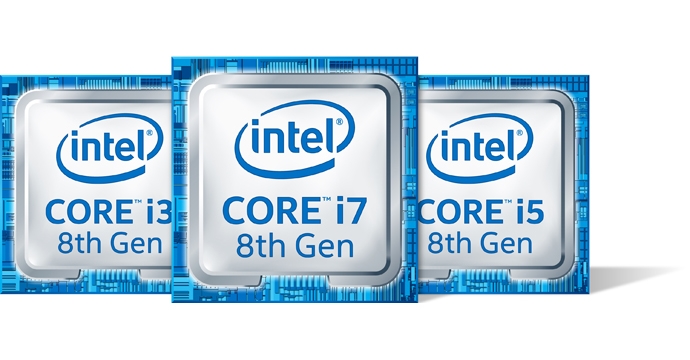
Most people assume that a name with a higher number means a better product. So the same should apply to the Core i5 and Core i7 series too, right? Well, not really…
The generation gap
Because the i5 and i7 series have been around for many generations, there are always several generations of i5 and i7 simultaneously on the market. Often some of the newer i5 processors will be more capable than the older i7 models, so unless you are careful, just going by the “i7” name might get you a slower processor.
i5 can be faster
Moreover, Intel’s laptop processors are divided into several market segments, each with specific features but without a clear indication of their subsequent market segments. As such, there are processors with the “i5” name, which are actually faster than some processors catalogued as “i7”.
For example in the Intel Core 7th Generation, the Intel Core i5-7300HQ is actually faster than the Intel Core i7-7600U: Intel has an explanation for this, the i7-7600U is part of the U series, which is destined for ultraportable notebooks with low power consumption and good battery life. The i7-7600U is top of the line for this market segment, hence the “i7” name. The i5-7300HQ is a performance-oriented processor, which sits in the mid-range of its market segment and does not offer the best battery life but offers excellent processing power. Once you are more familiar with this information the naming scheme makes more sense, but for someone who does not know all these details, it can be confusing.
Intel has an explanation for this, the i7-7600U is part of the U series, which is destined for ultraportable notebooks with low power consumption and good battery life. The i7-7600U is top of the line for this market segment, hence the “i7” name. The i5-7300HQ is a performance-oriented processor, which sits in the mid-range of its market segment and does not offer the best battery life but offers excellent processing power. Once you are more familiar with this information the naming scheme makes more sense, but for someone who does not know all these details, it can be confusing.
Small performance difference
Another important factor to consider is that the performance difference between an i5 and an i7 is not always significant, despite the visible price difference. In fact, Intel’s difficulty in explaining its pricing scheme has come to the attention of news outlets over the past few months.
Let us take the following situation: you are browsing noteb.com or your favourite laptop store and you are trying to build the perfect notebook. Your basic configuration comes with an i3-8130U processor, and you have a few bucks to spare. So, why not go higher? You initially choose an i5-8250U since switching from the i3 version is only around $100. Comparative tests will tell you that the upgraded i5 processor offers a 40% increase in overall performance. Not bad, for a $100 investment!
However, you are a champion and you feel you can go a bit further. Most line-ups will recommend an Intel Core i7-8650U processor, with an upgrade price of around $100, if you switch from your i5 version. Cool! You would expect another leap in performance, right? Well, no, not really. While the chosen i7 is 50% better than the original i3, it only offers a maximum 10% increase from your i5… for the same price it took you to upgrade from the i3 to the i5! Unless you absolutely need to have the latest and greatest, often it does not make financial sense to upgrade from an i5 to an i7. Check before you buy
Check before you buy
So, what is there to do, aside from checking our website and the online comparative tables? Well, just be careful and check some benchmarks too. Intel has a huge market share and more than a couple brilliant processors. Even with the recent Spectre and Meltdown debacle, the Santa Clara giant is still dominating the notebook market and has a huge range of models with different and sometimes confusing marketing strategies, which require a bit of knowledge for a good purchase decision.

Leave a Reply